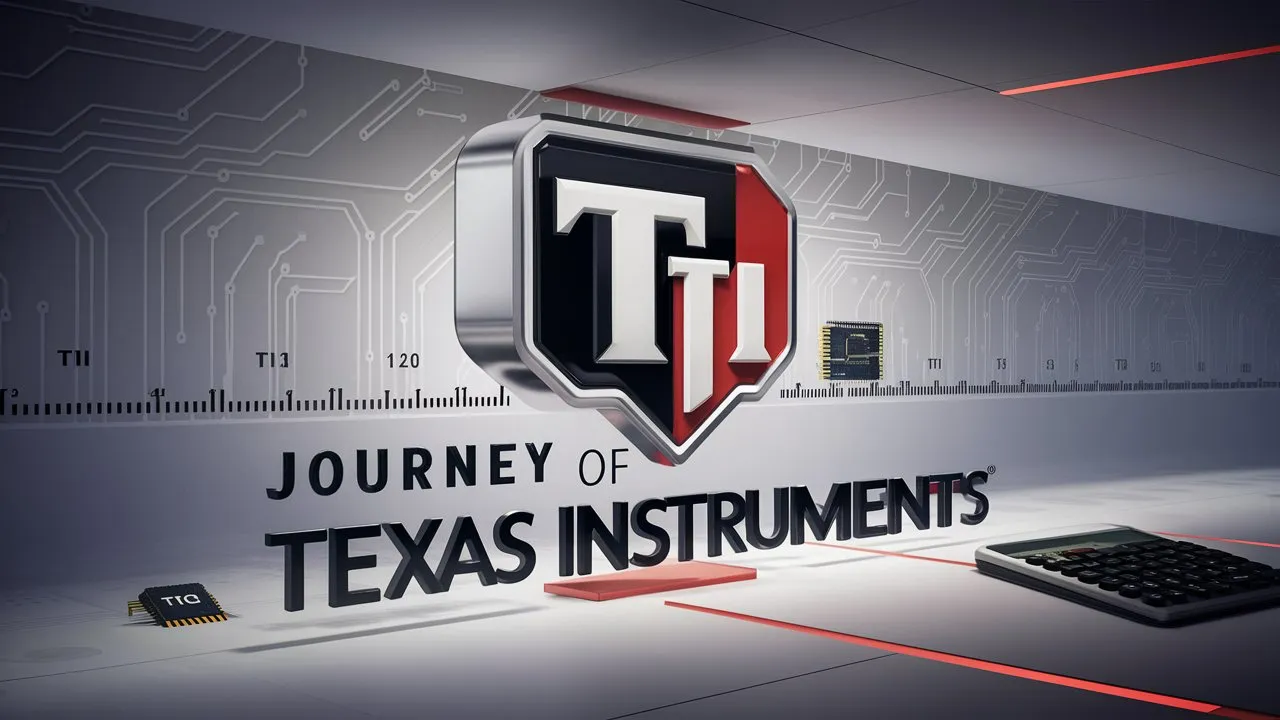
Texas Instruments' story begins in 1930 when it was founded as Geophysical Service Inc. (GSI) by J. Clarence Karcher and Eugene McDermott. The company's primary focus was on seismic exploration services for the oil industry, helping companies locate oil reserves beneath the Earth’s surface. The expertise GSI developed in precision instruments and measurements would lay the groundwork for TI’s future innovations.
In 1951, the company underwent a significant transformation. McDermott, along with several business partners, acquired GSI and renamed it Texas Instruments Incorporated. This shift marked the beginning of TI's journey from a geophysical service provider to a leader in the electronics and semiconductor industry.
The 1950s were a decade of rapid technological advancement, and Texas Instruments quickly recognized the potential of semiconductors. In 1954, TI introduced the world’s first commercial silicon transistor, which was a significant improvement over the earlier germanium-based transistors. This breakthrough positioned TI as a key player in the burgeoning semiconductor market.
But it was in 1958 that TI made its most monumental contribution to the tech world. Jack Kilby, an engineer at Texas Instruments, invented the first integrated circuit (IC). This tiny piece of technology, which combined multiple electronic components onto a single chip, paved the way for the modern electronics era. The integrated circuit revolutionized the design and manufacture of electronic devices, making them smaller, faster, and more reliable. Kilby’s invention earned him the Nobel Prize in Physics in 2000, a testament to the significance of his work and TI’s role in shaping the future of technology.
As Texas Instruments continued to innovate, the company expanded its product portfolio to include a wide range of electronic components that have become essential in various industries.
One of TI’s most recognizable contributions to the consumer market is the handheld calculator. In 1967, the company introduced the first portable electronic calculator, the Cal-Tech. This invention made complex calculations accessible to the masses, transforming education and various professional fields. The success of the Cal-Tech led to the development of a whole line of calculators, including the famous TI-30 and TI-83, which have become staples in classrooms around the world.
TI’s innovations didn’t stop with calculators. The company also became a leader in the development of microcontrollers—small, self-contained computers that are embedded in other devices. These microcontrollers power a vast array of applications, from household appliances to automotive systems, making everyday life more convenient and efficient.
In addition to digital electronics, Texas Instruments has made significant strides in analog semiconductors. Analog technology, which processes continuous signals, is crucial in applications such as power management, signal processing, and data conversion. TI’s advanced analog products are used in countless devices, from smartphones and medical equipment to industrial machinery, ensuring that the digital world runs smoothly.
Texas Instruments’ legacy is defined by its relentless pursuit of innovation. From pioneering the integrated circuit to leading in analog and embedded processing, TI has consistently pushed the boundaries of what is possible in technology. The company’s products have touched nearly every aspect of modern life, enabling advancements in communication, healthcare, transportation, and countless other fields.
Today, Texas Instruments continues to be a driving force in the electronics industry, with a focus on developing energy-efficient solutions and enhancing the performance of its products. TI’s commitment to innovation and excellence ensures that it will remain at the forefront of technological progress for years to come.
As we conclude Day 1 of our series, we hope you’ve gained a deeper understanding of Texas Instruments’ incredible journey and its impact on the tech world. TI’s story is a powerful reminder of how innovation and adaptability can transform a company—and an entire industry.
Stay tuned for Day 2, where we’ll explore another leading electronic component manufacturer that is shaping our tech-driven world. Whether you’re an industry professional, a tech enthusiast, or simply curious about the companies behind the gadgets we use every day, this series will provide you with valuable insights into the innovations that drive our modern world.
Q: What was Texas Instruments originally known for?
A: Texas Instruments began as Geophysical Service Inc., a company focused on seismic exploration services for the oil industry.
Q: What is Texas Instruments' most significant contribution to technology?
A: Texas Instruments is best known for inventing the first integrated circuit in 1958, which revolutionized the electronics industry.
Q: How did Texas Instruments impact the education sector?
A: TI made a significant impact on education by introducing handheld calculators, making advanced calculations accessible to students and professionals.
To know more, watch our video : https://www.youtube.com/shorts/7wJ8Y5BYkJY
Facebook : https://www.facebook.com/zenkaeurope
Twitter : https://x.com/ZenkaEurope
YouTube : https://www.youtube.com/@ZenkaEurope
LinkedIn : https://www.linkedin.com/company/zenka-europe-uab/
Instagram : https://www.instagram.com/zenka_europe